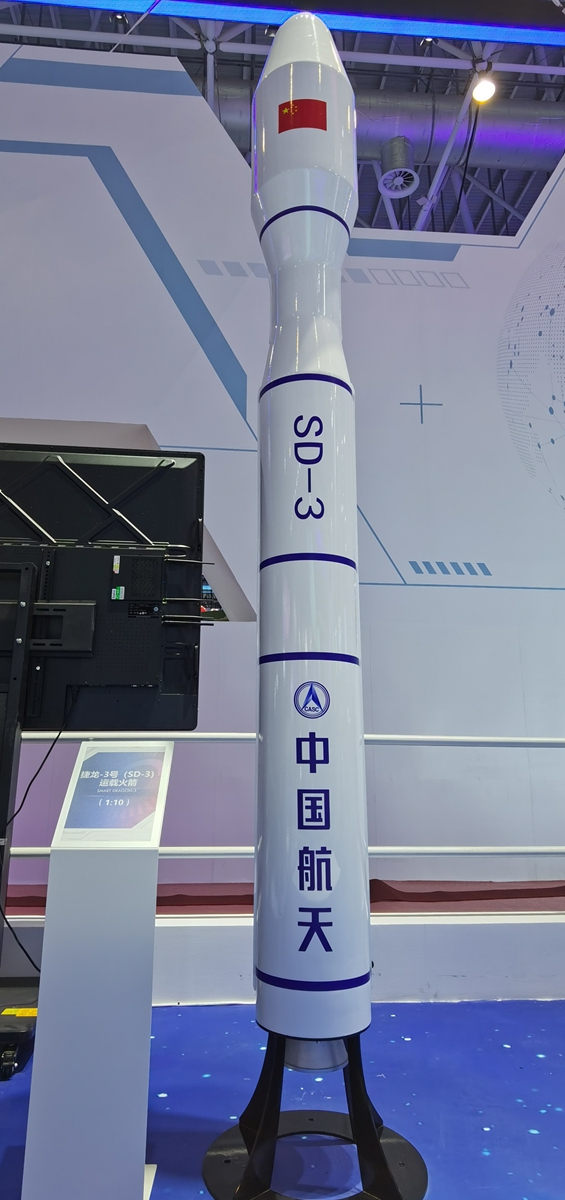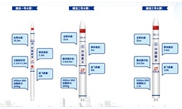China unveils largest solid-fueled commercial rocket at Airshow ahead of maiden flight

Model of Smart Dragon-3 Photo: Courtesy of CASC
China unveiled the Smart Dragon-3, the country's largest solid-propellant launch vehicle to provide commercial services for global clients, at the ongoing 14th China International Aviation and Aerospace Exhibition, also known as Airshow China, in Zhuhai, South China's Guangdong Province, ahead of the launcher's maiden flight.
The four-stage Smart Dragon-3 rocket was developed by the China Rocket Corp, also known as China Rocket, which is affiliated with China's biggest rocket manufacturer, the China Academy of Launch Vehicle Technology (CALT.)
With a diameter of 2.64 meters, a length of 31.8 meters and a liftoff weight of 140 tons, the rocket is able to send multiple satellites with a combined weight of 1.5 tons into Sun-synchronous orbit at an altitude of 500 kilometers. It can be launched from the ground or at sea, the Global Times learned from the China Rocket.
Moreover, the rocket could launch up to 20 satellites at one go, which will help domestic and overseas clients to achieve rapid constellation deployment.
It will take only 72 hours to prepare for a launch and the rocket comes with either a 2.9-meter-diameter nose cone or a bigger 3.35-meter-diameter one, which is the largest in the Smart Dragon rocket family, the company said. These features show the high adaptablity and cost-efficiency of the rocket.
Xing Zhi, deputy director of the project department in China Rocket, who participated in the rocket's development, told the Global Times during an exclusive interview that eyeing its maiden flight with a launch at sea before the end of November, the Smart Dragon-3 made a number of technological breakthroughs in the past year, making it more competitive in the commercial aerospace market.
With improved technology to maintain the stability of the rocket body, the Smart Dragon-3 could realize a "hot launch at sea" instead of a "cold one," Xing said.
A hot launch means the rocket could directly launch from a floating vessel, while in a cold one the rocket first pops up from the vessel and then lifts off as in previous Long March-11 rocket launches at sea, he explained. "The main advantage of the hot launch mode is that it would provide a better environment for the satellites inside the rocket's nose cone."
The Smart Dragon-3 rocket will also gradually become able to support multiple launches of multiple rockets onboard one vessel in a single journey into the sea, as opposed to the previous mode of one rocket launch per vessel. "It will significantly reduce the launch time and boost efficiency, which is extremely valuable for customers who need rapid and emergency deployments of multi-satellite constellations," Xing said.
The rollout of the SD-3 will reduce the unit costs of payloads to $10,000 per kilogram, said the CALT in March 2021, highlighting the model's strong market competitiveness.


